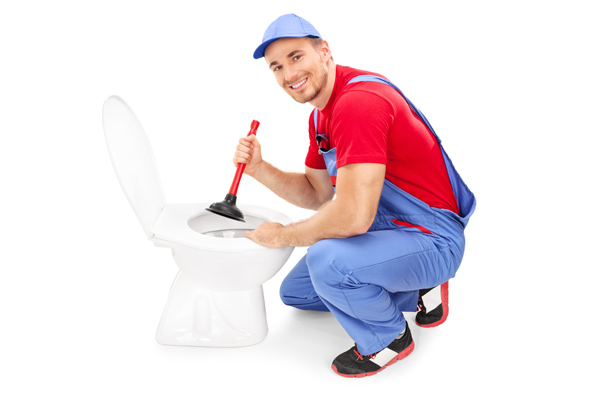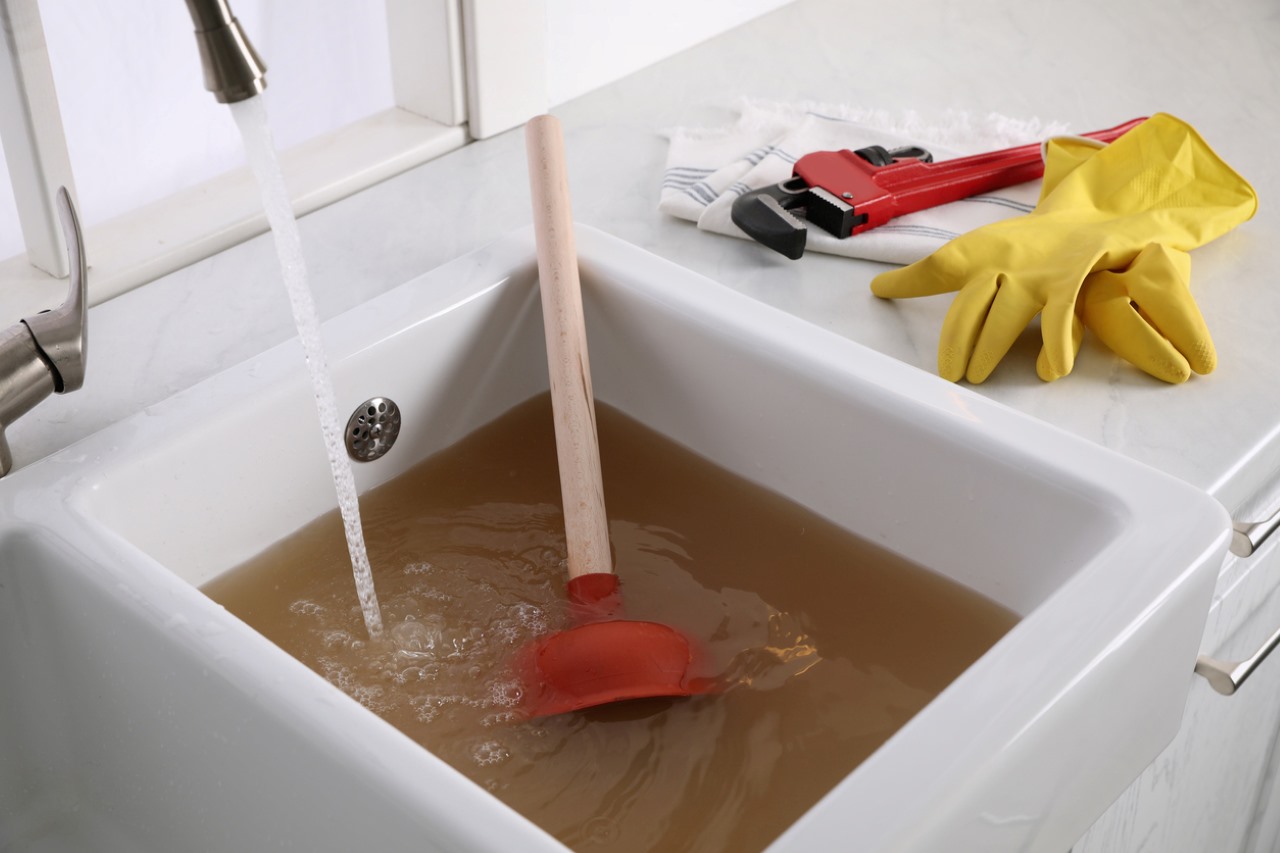Perfecting Plunger and Drain Cleaners: Crucial Tips
Perfecting Plunger and Drain Cleaners: Crucial Tips
Blog Article
Just about every person may have their own unique rationale about Here's How to Correctly Use a Toilet Plunger.

Introduction
Correct upkeep of house drains pipes is necessary for stopping clogs and ensuring smooth water circulation. Among the secret tools in every home owner's toolkit is the plunger, alongside various drainpipe cleaners created to deal with stubborn obstructions successfully. This article checks out how to make use of plungers and drainpipe cleaners successfully to keep your drains pipes flowing easily.
Section 1: Understanding Bettors
Types of Plungers
There are a number of sorts of plungers offered, each made for different types of drains pipes and blocks. The most common kinds consist of cup plungers, flange plungers, and accordion plungers.
Just How Plungers Work
Plungers service the principle of producing stress and suction to dislodge blockages. When effectively used over a drain, they create a vacuum that can pull out debris or break up blockages.
Choosing the Right Plunger
Selecting the right plunger depends on the type of drainpipe and the nature of the obstruction. Mug bettors are suitable for sinks and bathtubs, while flange plungers are better matched for commodes because of their style.
Common Blunders with Bettors
Preventing these mistakes makes certain efficient plunging: improper seal around the drainpipe, inadequate force, and unclear bordering debris.
Area 2: Utilizing Plungers Effectively
Prep work
Before diving, make sure the plunger covers the drainpipe completely and creates a limited seal. Clear any noticeable particles around the drainpipe opening.
Technique
Beginning with mild plunging motions to develop suction. Increase pressure slowly, making use of a consistent rhythm. Repeat as needed up until the drain gets rid of.
Troubleshooting Tips
If plunging does not function, attempt changing the seal, applying petroleum jelly for a better seal, or utilizing a different type of plunger.
Section 3: Understanding Drainpipe Cleaning Company
Kinds Of Drain Cleaners
Drain pipes cleansers can be chemical or enzymatic. Chemical cleansers utilize strong chemicals to liquify blockages, while chemical cleaners use all-natural enzymes to break down organic matter.
Just How Drain Cleaning Company Work
Chemical cleansers react with obstructions to dissolve them, while chemical cleaners break down organic products like hair and grease without hurting pipelines.
Safety Factors to consider
Constantly wear handwear covers and eye defense when using chemical drainpipe cleansers. Make sure sufficient air flow and comply with producer guidelines meticulously.
Eco-Friendly Alternatives
Think about using vinegar and cooking soda or enzyme-based cleansers for environment-friendly options that are much safer for pipelines and the atmosphere.
Section 4: Using Drain Cleaning Company Efficiently
Application Strategies
Pour chemical cleansers straight right into the drainpipe opening. Enable them to help the suggested time before flushing with hot water. Chemical cleansers must sit over night.
Safety measures
Prevent blending various sorts of cleansers, as this can generate poisonous fumes. Never ever make use of chemical cleansers combined with a bettor, as splashing can take place.
Handling Persistent Obstructions
For consistent clogs, consider making use of a plumbing snake or calling a specialist plumbing technician to avoid damages to pipelines.
Conclusion
Finally, comprehending exactly how to utilize plungers and drain cleansers successfully is vital for maintaining healthy and balanced pipes systems. By selecting the right tools and techniques, property owners can tackle small clogs and protect against major pipes issues down the line.
How To Properly Use A Plumbing Snake To Clear Drains
When any drain clogs in our home arise, we tend to gravitate toward the plunger and little else. In cases where the plunger and its vacuum-created pressure are not able to clear clogs, many immediately move to harmful chemicals or simply call their plumber to fix the issue.
we’re happy to help with all drain cleaning needs and concerns. This includes informing you on a few other home remedies you may have at your disposal for minor to moderate clogs, one of which is the use of a plumbing snake. Many people have never used one of these before – let’s go over the steps to take when your drain clogs and you have a plumbing snake available.
Attempt Plunger Use
The first step here, as we noted above, should indeed be to grab your plunger when you notice a drain clog and attempt to resolve it this way. If you’re unsure how to use a particular type of plunger, our plumbers can answer any questions you have. If this doesn’t do the trick, however, you move on to the snake.
Locate And Prepare Snake
A plumbing snake is a metal or plastic device that’s generally about a quarter of an inch thick. It’s design with significant extensions, meant to reach down into your clogged drain and push the clog out. Snakes also contain drain augers that will latch onto and push stubborn blockages.
If your plunger doesn’t clear a clog, locate your snake and bring it to the drain in question. We also recommend keeping a bucket nearby to collect the clog once you pull it out, plus we’d advise wearing goggles and possibly protective gloves.
Feed Snake
Once you’re ready to go, feed the snake slowly down the drain, using the crank device it comes with to keep it moving until it finds the clog. Once this happens, much of the clog will be latched onto the coil so you can pull it out, while the rest will simply break up and flow downward.
Detach Debris
Remove the snake slowly from the drain, and once you’ve done so, pick off any debris that’s stuck to the coil. This is another area where wearing gloves is a must.
Flush Drain
Finally, take a few minutes to ensure the snake has done its job correctly. If you’ve been using it on a toilet, flush the toilet a couple times and make sure everything flows well. If you’ve used it on a different drain, flush it with some room temperature water.
https://www.mybuddytheplumber.com/blog/how-to-properly-use-a-plumbing-snake-to-clear-drains/

Application Strategies
Pour chemical cleansers straight right into the drainpipe opening. Enable them to help the suggested time before flushing with hot water. Chemical cleansers must sit over night.
Safety measures
Prevent blending various sorts of cleansers, as this can generate poisonous fumes. Never ever make use of chemical cleansers combined with a bettor, as splashing can take place.
Handling Persistent Obstructions
For consistent clogs, consider making use of a plumbing snake or calling a specialist plumbing technician to avoid damages to pipelines.
Conclusion
Finally, comprehending exactly how to utilize plungers and drain cleansers successfully is vital for maintaining healthy and balanced pipes systems. By selecting the right tools and techniques, property owners can tackle small clogs and protect against major pipes issues down the line.
How To Properly Use A Plumbing Snake To Clear Drains
When any drain clogs in our home arise, we tend to gravitate toward the plunger and little else. In cases where the plunger and its vacuum-created pressure are not able to clear clogs, many immediately move to harmful chemicals or simply call their plumber to fix the issue.
we’re happy to help with all drain cleaning needs and concerns. This includes informing you on a few other home remedies you may have at your disposal for minor to moderate clogs, one of which is the use of a plumbing snake. Many people have never used one of these before – let’s go over the steps to take when your drain clogs and you have a plumbing snake available.
Attempt Plunger Use
The first step here, as we noted above, should indeed be to grab your plunger when you notice a drain clog and attempt to resolve it this way. If you’re unsure how to use a particular type of plunger, our plumbers can answer any questions you have. If this doesn’t do the trick, however, you move on to the snake.
Locate And Prepare Snake
A plumbing snake is a metal or plastic device that’s generally about a quarter of an inch thick. It’s design with significant extensions, meant to reach down into your clogged drain and push the clog out. Snakes also contain drain augers that will latch onto and push stubborn blockages.
If your plunger doesn’t clear a clog, locate your snake and bring it to the drain in question. We also recommend keeping a bucket nearby to collect the clog once you pull it out, plus we’d advise wearing goggles and possibly protective gloves.
Feed Snake
Once you’re ready to go, feed the snake slowly down the drain, using the crank device it comes with to keep it moving until it finds the clog. Once this happens, much of the clog will be latched onto the coil so you can pull it out, while the rest will simply break up and flow downward.
Detach Debris
Remove the snake slowly from the drain, and once you’ve done so, pick off any debris that’s stuck to the coil. This is another area where wearing gloves is a must.
Flush Drain
Finally, take a few minutes to ensure the snake has done its job correctly. If you’ve been using it on a toilet, flush the toilet a couple times and make sure everything flows well. If you’ve used it on a different drain, flush it with some room temperature water.
https://www.mybuddytheplumber.com/blog/how-to-properly-use-a-plumbing-snake-to-clear-drains/

I recently found that blog entry about How to Use a Plunger to Unclog a Toilet or Drain when exploring the internet. I beg you take the opportunity to share this page if you appreciated it. We love your readership.
Give Me A Quote! Report this page